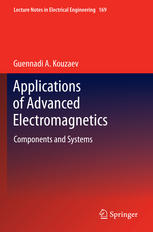

Most ebook files are in PDF format, so you can easily read them using various software such as Foxit Reader or directly on the Google Chrome browser.
Some ebook files are released by publishers in other formats such as .awz, .mobi, .epub, .fb2, etc. You may need to install specific software to read these formats on mobile/PC, such as Calibre.
Please read the tutorial at this link: https://ebookbell.com/faq
We offer FREE conversion to the popular formats you request; however, this may take some time. Therefore, right after payment, please email us, and we will try to provide the service as quickly as possible.
For some exceptional file formats or broken links (if any), please refrain from opening any disputes. Instead, email us first, and we will try to assist within a maximum of 6 hours.
EbookBell Team

5.0
78 reviewsThis text, directed to the microwave engineers and Master and PhD students, is on the use of electromagnetics to the development and design of advanced integrated components distinguished by their extended field of applications. The results of hundreds of authors scattered in numerous journals and conference proceedings are carefully reviewed and classed.
Several chapters are to refresh the knowledge of readers in advanced electromagnetics. New techniques are represented by compact electromagnetic–quantum equations which can be used in modeling of microwave-quantum integrated circuits of future In addition, a topological method to the boundary value problem analysis is considered with the results and examples.
One extended chapter is for the development and design of integrated components for extended bandwidth applications, and the technology and electromagnetic issues of silicon integrated transmission lines, transitions, filters, power dividers, directional couplers, etc are considered. Novel prospective interconnects based on different physical effects are reviewed as well.
The ideas of topology is applicable to the electromagnetic signaling and computing, when the vector field maps can carry discrete information, and this area and the results in topological signaling obtained by different authors are analyzed, including the recently designed predicate logic processor operating spatially represented signal units.
The book is rich of practical examples, illustrations, and references and useful for the specialists working at the edge of contemporary technology and electromagnetics.